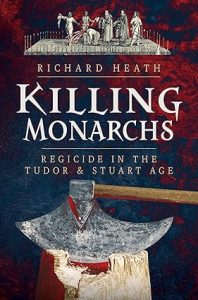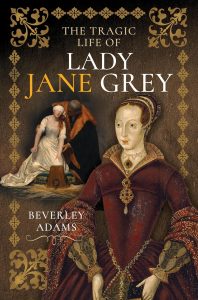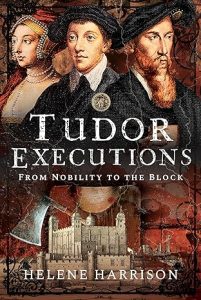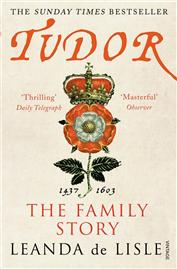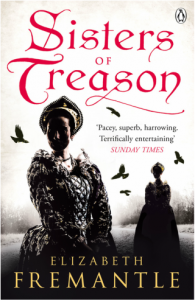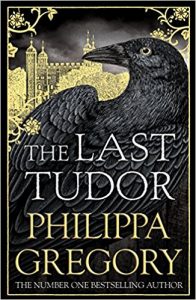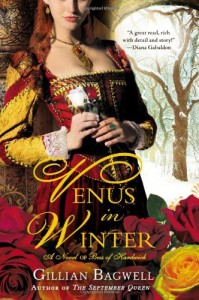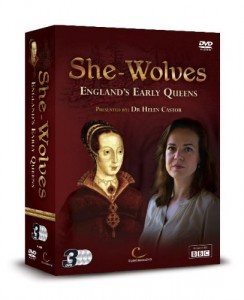Leah Redmond Chang is the author of ‘Young Queens: Three Renaissance Women and the Price of Power’ which is published by Bloomsbury on 11 May.
Leah is also the author of ‘Into Print: The Production of Female Authorship in Early Modern France’ and co-author of ‘Portraits of the Queen Mother: Polemics, Panegyrics, Letters.’
Buy ‘Young Queens: Three Renaissance Women and the Price of Power’:
Follow Leah Redmond Chang on Social Media
Leah’s website: Leah Redmond Chang – author and historian
Twitter: @leahrchang
Many thanks to Leah for answering my questions.
Why did you choose this subject for your book?
I wouldn’t say that I chose the subject, but rather that the subject found me over the course of a few years. Elisabeth de Valois was the initial inspiration for Young Queens. When I began this project, I had already written a scholarly book on Catherine de’ Medici and was curious about her eldest daughter – I had heard of Elisabeth de Valois but didn’t know anything about her. The details that survive of Elisabeth’s illness and menstrual cycle were so compelling to me that I wanted to find a way to tell her story. But as often happens with women from the period, the archive was a little patchy. In the meantime, it was clear to me that the relationship between Catherine and Elisabeth was special, so I figured that mother-daughter bond would play an important role in any book I would write about Elisabeth.
And then along came Mary, Queen of Scots. As I was researching Catherine and Elisabeth, Mary started showing up everywhere (she loved the spotlight during her life and has not relinquished it even in the archive). In my notes I started referring to “The Mary Problem,” which meant two things – both the trouble that Mary caused for Catherine and Elisabeth and the challenge she presented to me as a writer. How was I going to deal with Mary in the book? Soon enough I realized that Mary was vital to this story as a protagonist, not just as a secondary character. And that’s because the events of her life track Elisabeth’s very closely – they grow up together as sisters, they get married around the same time, give birth around the same time. Their death and downfall also take place in the same year. These historical coincidences were the stuff of story. You couldn’t make it up even if you wanted to.
Once I saw the historical parallels, I saw that there were thematic parallels too, and that the challenges Mary and Elisabeth faced echoed the ones Catherine had grappled with as a young queen. I was a good way into the research when I realized that I was writing a book about women and power – how women are used in the pursuit of power, and how power can destroy a young woman – as much as I was interlacing the stories of Catherine, Elisabeth, and Mary. I wanted to write a human portrait of these queens, but I also wanted to say something broader about power.
What does your book add to previous works covering these women?
I think of Young Queens as a historiographical project as much as biographical or historical one. By this I mean that I was really focused on how I was telling the story as much as what I was telling. I always learn history better when I hear or read it in story-form, and that’s what I wanted to deliver here. I also wanted the book to be very character-driven, to capture as much inner-life as possible, while still respecting the sources, so that readers might see these queens first and foremost as girls and young women. Capturing the complexity of their humanity seemed essential to me – there is a way in which history tends to flatten women so that they are almost reduced to a stereotype. So, Catherine de’ Medici, for instance, is portrayed as either very bad or very good. I saw her as more nuanced, somewhere in between – like any human being. Conveying the complexity of these women seemed imperative to a feminist project.
As for the history itself, I wanted to offer a fresh view of Catherine and Mary, the better-known queens, fleshing out some of the events in their early reigns while privileging their points of view. And I wanted to center the spotlight on the débutante, Elisabeth de Valois. There has been some scholarship on Elisabeth, but very little for the general reader since the 19th century. While Elisabeth was praised by all comers in her time (like every royal woman, for that matter) in some ways she embodies what must have been the experience of countless royal and aristocratic girls, almost like a royal “everywoman.” Elisabeth wasn’t an exceptional person, in part because her life was cut off when she was barely in her twenties – but that ‘averageness’ is exactly what makes her important as a historical figure.
For me, at least, intertwining the stories of Catherine, Elisabeth, and Mary – telling it as one, unified story – made me see all three women differently. I was struck by the similarity of the challenges they faced – although they made choices, and the outcomes were different, Catherine, Elisabeth, and Mary were operating in the same dynastic system that placed specific pressures on the bodies and minds of young women. There is something integral to being female, fertile, and young that spells peril for young royal women in the period. And so, I hope readers will see in Young Queens a larger story about queenship as much as an interlacing of three biographies.
Which of the ‘Young Queens’ was your favourite to write about?
I have a hard time choosing. I love writing about Catherine de’ Medici because I’ve worked on her for a long time, and there is something very familiar about her to me — like visiting an old friend. But I have a soft spot for Elisabeth de Valois because she is so unknown among today’s readers, and because she was the inspiration for Young Queens. And she died so young. There is a kind of tragedy to her story — she was beloved by both the French and Spanish and showed so much potential as a political player. One wonders what she might have accomplished had she lived, how historical events might have turned out differently. But all the promise she embodied disappeared when she died doing the very thing she was supposed to do — trying to bear an heir for the throne. There is a kind of gentleness and youth to Elisabeth that you can detect even in her letters. It was wonderful for me to work through her letters in manuscript, to see how she handled a pen when she was young, how she phrased her sentences. I really felt like I was meeting a teenager, just one who lived hundreds of years ago.
What surprised you most researching this book?
One of the biggest surprises became a through-line in the book, but I only saw it once I put the stories of Mary and Elisabeth together. I was surprised by how much the minds and bodies of young women shaped historical events in the period. The Mary whom I discovered in my research was painfully young when she returned to Scotland, and insecure — but insecure in different ways than I had imagined. She’d always been charming and easily commanded a room. But at the time of her return to Scotland, she’s undergoing a kind of identity crisis, one that could only have been traumatic for a teenager. She’s been stripped of her home, culture, family, her husband (who was also a childhood friend), and her sense of self. She’s lost one crown, and with it a role in which she had excelled and to which she had been bred — the role of Queen consort of France. She’s shipped off to Scotland and given the reins of a kingdom in turmoil, with scant preparation and support. And all she wants is to get back to that childhood feeling in which she felt so secure. So many choices Mary made after she returned to Scotland seem motivated by her desire to ‘go home’, at least emotionally if not physically.
As for Elisabeth de Valois — I was astounded at how much ink was spilled between France and Spain about her health and menstrual cycle. Elisabeth’s ladies-in-waiting watched her period like hawks, down to the tiniest details. Of course, they reported everything to Catherine de’ Medici. Those ladies at the Spanish court must have been keeping something like a calendar tracking her cycle, and I wouldn’t be surprised if, back in France, Catherine kept her own calendar. Everyone wanted Elisabeth to conceive and bear a child as soon as possible — after all, that was the chief duty of a queen consort. But when you consider the political ramifications — that peace between the realms, even peace between warring religious factions — depended on whether Elisabeth got her period, you begin to see how much turned on the workings of this one teenager’s body. It’s one of those amazing moments when you realize how history turns around small details, a little like the butterfly effect. In this case, it’s clear that history is made not only on the battlefield or in the council chamber — places that are dominated by men, of course — but also by the ovaries and uterus of a 15-year-old girl.
What do you think Elizabeth of Valois learned from her mother and sister-in-law?
The French sixteenth-century writer Brantôme implied that Elisabeth was really her mother’s daughter. He wrote decades after Elisabeth’s death, and he was a fan of both Catherine and Elisabeth, so his writing often reads like propaganda. But I think he was spot on in his descriptions of the affection that Catherine and Elisabeth felt for each other. That love was the basis for Elisabeth’s political education. Catherine taught Elisabeth that blood is thicker than water, that political alliances are built through family networks, that family should always come first. She really instilled that lesson in Elisabeth. The Medici, Catherine’s family, were very clannish in their loyalties, and family bonds were likely especially important to Catherine because she grew up an orphan. She learned early that family was valuable – during dangerous moments in her childhood, it was her family connection to France that saved her. She never let Elisabeth, or any of her children, forget the importance of family bonds.
But Elisabeth might have learned this same lesson from observing Mary Stuart. Mary is a Stuart and the Queen of Scots thanks to her father, but on her mother’s side, she’s a Guise, and there was no family more devoted to each other than the Guises. That family was extremely close, and the young Mary, Queen of Scots showed as much or more attachment to her Guise identity than to her royal, Scottish one. The family feeling among the Guises was palpable and very powerful – the Guises exerted real influence at court in part because they knew how to mobilize their family connections so well.
Elisabeth must have observed all this as a young teen in France; even after she left for Spain, her mother’s lessons continued through letters. But it all got more complicated once Elisabeth was Queen of Spain. What, after all, constitutes family for a bride? Catherine herself showed unfailing loyalty to the House of Valois after she married into it. Once Elisabeth married Philip II of Spain, she became duty-bound to respect Philip as her husband and king, and to respect the custom, culture, and laws of her Spanish subjects. During her lifetime she remained loyal to Catherine because she loved her mother. But Elisabeth didn’t always agree with Catherine, and it’s unclear if they might have grown apart. Had Elisabeth lived longer, she might have grown to fully endorse her husband’s policies, perhaps at her mother’s expense. This was the tricky position in which royal and aristocratic brides often found themselves.






